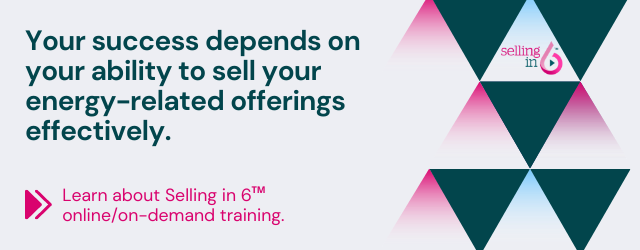I am often asked about marketing because it can seem intimidating and complicated. The mistake most salespeople make is assuming what they do is like following a straight path to the results they want. However, the truth is that marketing is never a direct process. It’s more like climbing a playground structure: there are multiple ways to the top.

Here are 15 aspects of creating a marketing plan that is tailored for you and your sales team:
- Conduct market research. A lot of people don't do enough homework! You need to understand what market dynamics influence your customers. Where do they look for advice? What economic pressures are befalling them?
- Define who your customers are.Let’s say you’re working with residential customers and you’re looking into a particular niche. Are your prospects retirees? Are they empty nesters? Are they young home buyers? Condo owners?
- Look to other vendors who are worthy of emulating.Do you see examples in your marketplace of people that are really doing a good job? Think to yourself, “If I could be at least as good as they are or better, ideally I'd have my share of the market.”
- Pursue segments with unmet or underserved needs.It's entirely possible that you'll see a sub-segment of a demographic where you could do a better job than what's being done.
- Track the benchmarks of your particular segment. The more you know about your customers, the more you can speak their language and attend to their needs. If we were to stick with the residential example, you’d be considering questions like: How long are people staying in their homes? How long is a home staying on the market? Are home prices increasing or decreasing? What's the tendency toward getting home equity lines of credit? What partners might you consider enlisting as your coopetition? (Roofing contractors, appraisers, building inspectors, mortgage brokers and others who have access to customers of their own and would definitely benefit from teaming up with you to do lead-swapping.)
- Target your particular market. There are several ways to do that. Look into their organizations and associations. Read what they read. Attend their online events. This isn’t only homework, but an opportunity to introduce yourself and network.
- Analyze the competition. Who is your competition? In short: any vendor who can identify a customer’s needs, educate them or transform an implied need to a felt need without your involvement. Sometimes you need to use a pretty broad brush of who your competition is, and once you’re aware you need to distill your competitive advantage and a unique value proposition. Which brings me to…
- Know your value proposition. Is it industry knowledge? Is it the features of your product? Is it quality? Ease of use? Speed of service? What about customer satisfaction? There are many dimensions to how vendors define their value; however, overall it’s playing to your strengths and knowing how to communicate them to your clients.
- Work on a three-sentence solicitation. This is one of the quickest and most effective ways you can reach new customers. The first sentence defines who you’re selling to. The second sentence is what you have to offer. The third sentence is your value proposition. Example: “Over the last 3 years we have helped 8 hospitals within 10 miles of yours reduce their utility bills with an average savings of 15%. It occurred to me as I was driving past your facility that your patient rooms have the same lighting we removed from five of those hospitals with an average lighting energy savings of 25%. If you’d be interested in exploring how we could extend the success we’ve had with other facilities to yours, I’d be open to a conversation.”
- Define your brand. This doesn’t necessarily mean logos or slogans. This means familiarity and trust. Most people would rather do business with someone they’re already comfortable with instead of seeking something new, and it’s ultimately up to you to prove yourself and become that person.
- Set goals. Perhaps it’s gaining a new number of customers or a certain amount of revenue. Maybe it’s expanding your offerings to the average customer. Maybe it’s saving a set amount of megawatt hours. By putting a line in the sand, you know what you’re going for and when you get there it’s pretty satisfying.
- Stay open to changing your communication. Strategies are constantly evolving and there are plenty of choices regarding marketing choices: direct mail, email, phone calls, promotional videos, print ads, social media and so on. The field is huge! We didn’t have all of these choices 20 years ago, and there are no rules saying you need to stick to one method. Vary your modes of communication and observe what works.
- Make sure you have enough backup. Make sure to engage all stakeholders in your sales process as well as making sure that you have covered your bases financially and have enough staff to handle what you’re proposing.
- Remember that customer support doesn’t end with the sale. Some of the best marketing comes from circling back making sure customers are happy with the services they’ve received. You may even discover some non-utility cost financial benefits that could benefit future customers. That’s something that could be included in your next advertisement or article!
- Encourage feedback. For better or worse, you need to know what your customers are thinking! Online polls, surveys and other data tracking systems are out there to make sure you can keep tweaking your offerings and keep the lines of communication open.
The point is that marketing is never a static endeavor. It involves taking massive action while quantitatively measuring your results, adjusting as you go and then taking more action. If you attain your goals, there is no reason to stop there!







